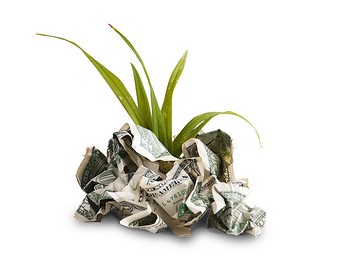
The CIO is in a great position to lead sustainability initiatives at a corporation. Why? Because like information technology, corporations must weave sustainability into the fabric of the enterprise to generate the opportunities that companies like The Dow Chemical Company, SAP and Intel have orchestrated. Their successes are featured in: “Sustainability: Moving from Compliance to Leadership.”
To generate revenue, Dow Chemical created a Sustainability Chemistry Index, which increased its sales of sustainable chemistry products between 2009 and 2010, rising from 3.4 percent to 4.3 percent of all revenue. By 2015, it expects such sales to be 10 percent of revenue.
Intel saved $136 million in 2010 from 11 employee environmental projects. The company includes environmental performance goals throughout its operations, extending to its global value chain. SAP, which established 400 sustainability metrics embedded in its processes, saved $250 million between 2008 and 2010 in energy costs.
“SAP has always tracked financial resources, human resources, and capacities, but the company has never tracked energy, water, wood or any other type of natural resource,” said Peter Graf, Chief Sustainability Officer at SAP in The CIO’s Next Leadership Opportunity: Sustainability. “We never tracked these as there was no perceived need, because it was considered infinitely available. Now we are starting to manage these areas as a scarce resource, which is why applying enterprise resource planning and management is essential.”
The future of sustainability is to embed energy saving practices into business operations. Since technology touches all facets of the business, CIOs are uniquely positioned to lead the charge. In addition, the CIO can drive the information capture and analytics needed to identify new opportunities.
I see CIOs contributing to sustainability efforts along three dimensions. Some of these activities the CIO controls. Others, he or she will have to collaborate with enterprise or value chain partners. The underlying goal in the following areas is to integrate sustainability practices into operations:
- Establish Credibility with Green IT-The IT department is the largest consumer of energy, so naturally CIOs should set an example at home before branching out and embedding sustainability throughout the enterprise.
- Embed Sustainability in the Enterprise-CIOs don’t have to start from scratch to embed sustainability into the enterprise. They can use Enterprise Resource Planning (ERP) systems that already track compliance issues as a basis to broaden their sustainability scope to include cost savings. CIOs can unify information from payables, unity bills, and related systems to paint a comprehensive picture of energy consumption across the enterprise and to create visibility into which facilities are underperforming.
- Collaborate with the Value Chain- Most organizations are discovering that the majority of their impact on resources is outside of the enterprise. For example, a leading international apparel maker reported that internal operations accounted for 15% of the economic value of its greenhouse gas emissions, whereas its supply chain accounted for 85%. This sort of insight is motivating entire industries to collaborate with their partners and vendors to drive sustainability.
Corporations are moving full steam ahead on sustainability initiatives. Now is the time for CIOs to take the lead on cultivating a company-wide culture where sustainability is a way of life. They have data they can build on, visibility into the entire organization and connections to vendors and partners. Success could mean millions of dollars in revenue and/or savings.
What, if anything, is holding you back from making strides in sustainability?
Image supplied by Aaron Patterson
Did you enjoy this article? Please subscribe to CIO Dashboard to receive the latest posts!


